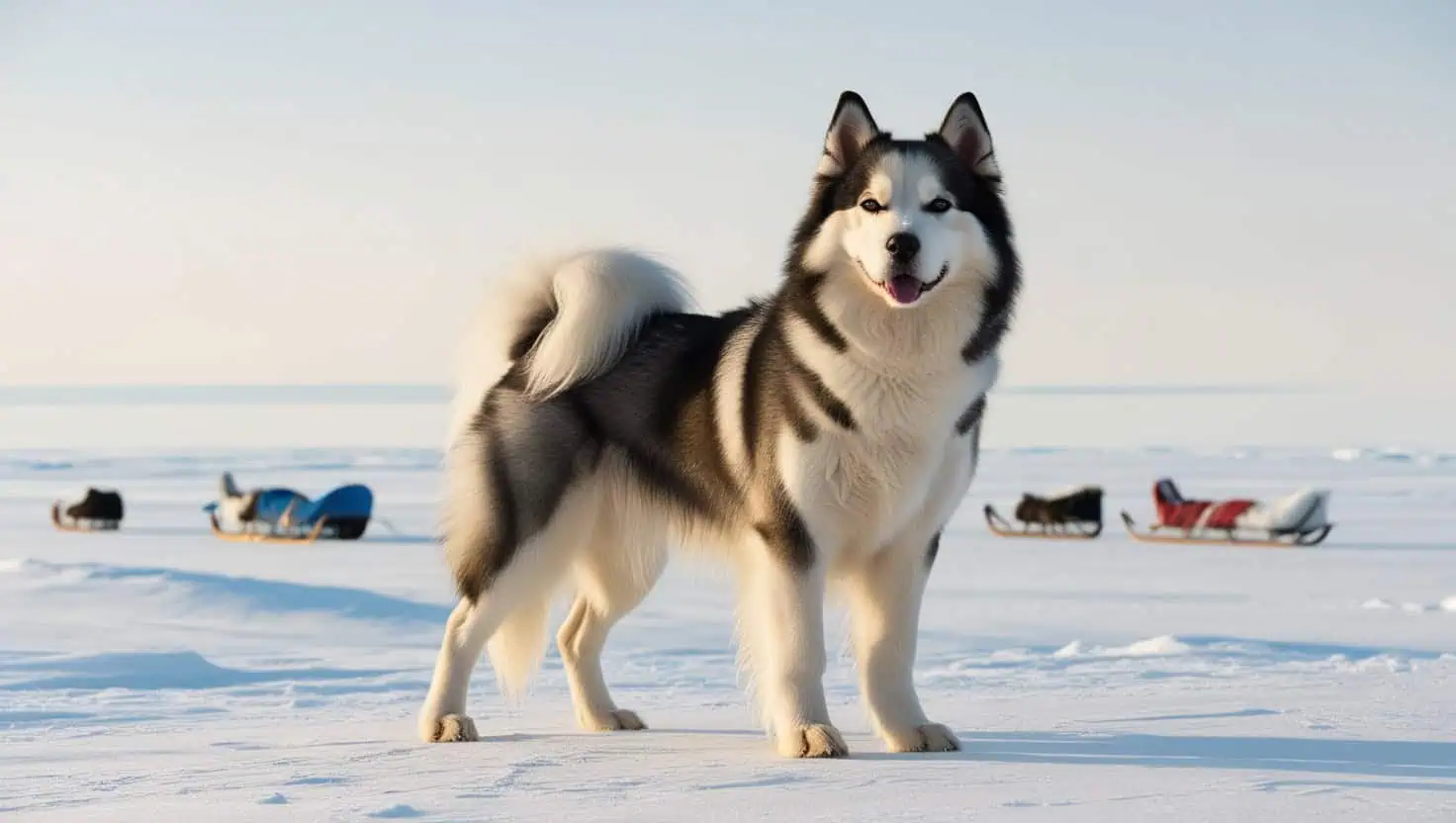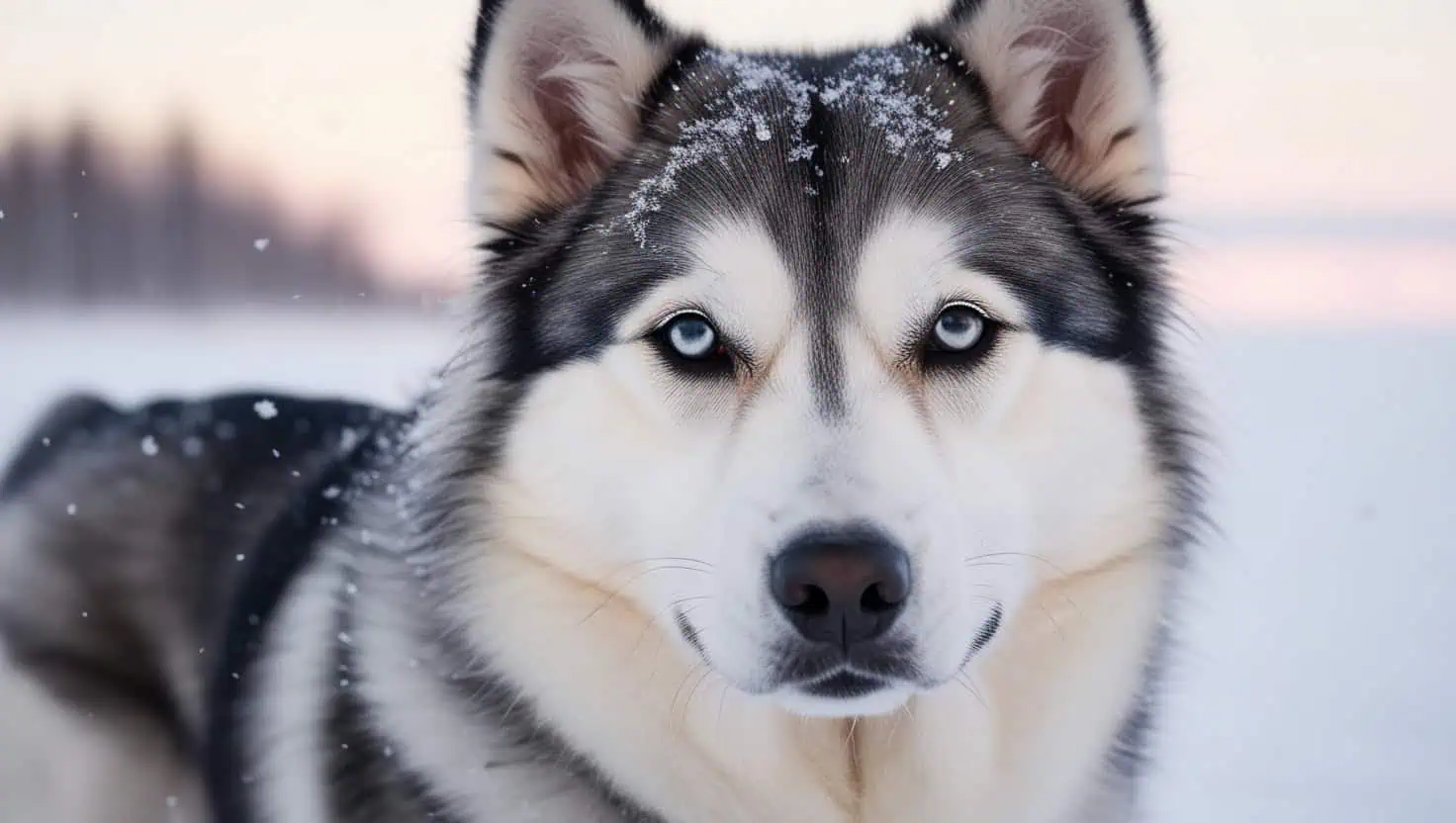Qimmiq: The Living Language of Inuit Dog Naming

The word Qimmiq means “dog” in Inuktitut, the language of the Inuit people. This name holds a special place in Inuit culture, showing how important dogs have been for thousands of years. These dogs helped Inuit families travel and hunt in the cold. Keep reading to learn about Qimmiq and why it matters so much.
Key Takeaway
- Qimmiq means “dog” in Inuktitut and shows the bond between Inuit and their dogs.
- The Canadian Eskimo Dog, or Qimmiq, is one of the oldest dog breeds, going back 4,000 years.
- There is a push to change the name to Inuit Qimmiq to honor Inuit culture.
Historical Context
Credits: Dogs Wiz
The Qimmiq, also known as the Canadian Eskimo Dog, has a long history that dates back at least 4,000 years.(1) These dogs played a vital role in the lives of the Inuit people. They were not just animals, they were essential helpers. Qimmiq were strong and could pull sleds across icy terrains. This made travel easier for Inuit families who needed to move from place to place.
Hunting was another important job for these dogs. They helped the Inuit people catch food like seals and other animals. For many Inuit, Qimmiq were more than just pets. They were part of the family, providing companionship and support.
In the 1920s, there were around 20,000 Qimmiq in Canada. However, by the 1970s, that number had dropped dramatically to fewer than 200. (2) This decline happened for a few reasons. The biggest reason was the introduction of snowmobiles. (3) Many people started using these machines instead of sled dogs. Today, thanks to efforts to keep the breed alive, there are about 300 purebred Qimmiq remaining.
Name Change Proposal
There is a strong movement to change the name of the Canadian Eskimo Dog to Inuit Qimmiq. (4) This change matters because it honors the Inuit people and their language. The Canadian Kennel Club has recognized this breed under its old name since 1888. However, many people feel it is time to update the name to reflect the true roots of these dogs.
The Canadian Eskimo Dog Club is at the forefront of this name change effort. They believe that using the term “Qimmiq” is a way to respect and celebrate Inuit culture. By using an Inuktitut word, it acknowledges the deep connection between the dogs and the Inuit people.
Some people have concerns about this name change. They worry that dropping “Canadian” from the name might overlook the broader history of the breed in Canada. This conversation shows how important identity is for many people. It highlights the need to balance respect for Indigenous culture with recognition of the breed’s Canadian heritage.
Cultural Significance

The Qimmiq holds a unique and important place in Inuit culture. These dogs are more than just animals that help with work; they are considered part of the family. Inuit families often give their dogs names in Inuktitut. These names often reflect the dog’s personality or what they do. For example, a dog that is strong might have a name that means “strong” in Inuktitut. This practice shows how close the bond is between Inuit people and their dogs.
Inuit dogs were companions, protectors, and helpers. They played many roles in the daily life of Inuit families. When families traveled or hunted, Qimmiq were always by their side. This connection goes beyond just having a pet; it shows the deep relationship that Inuit people have with their dogs.
Today, there are important conversations happening about whether people who are not Inuit should use Inuktitut names for their pets. Some believe that using these names shows respect for the culture. Others worry about cultural appropriation and whether it is right for non-Inuit people to use these words. This is an essential discussion, as it raises questions about respecting Indigenous cultures.
It is important for everyone to think carefully about how they choose names for their pets. Using Inuktitut words can be meaningful, but it should be done with thoughtfulness. People should consider the history and significance behind the names, making sure to honor the culture they come from. This way, everyone can appreciate the rich heritage of the Qimmiq while being respectful.
FAQs
What makes Inuit sled dogs unique in the harsh arctic environment of North America?
Inuit dogs, also known as Eskimo dogs, have evolved to survive in cold weather around the Hudson Bay and Baffin Island regions. (5) These working dogs developed remarkable abilities to navigate through arctic Canada’s challenging terrain. Their breed group is specifically adapted to pull dog teams across snow and ice, playing a crucial role in the survival of Inuit people for generations.
How did dog teams historically help Inuit families survive in the Arctic?
In the 19th and 20th centuries, dog teams were essential for transportation and hunting across the North Slope and Eastern Arctic. Inuit sled dogs helped families travel vast distances, hunt polar bears, and transport supplies. The fan hitch technique, a unique way of arranging sled dogs, allowed them to work efficiently in the challenging arctic climate of regions like Alaska Native territories.
What is the cultural significance of Qimmiq in Inuit communities?
Qimmiq, the Inuit word for dog, represents more than just a pet in Inuit culture. These dogs were not merely house pets but critical working dogs that supported survival. From the Thule people years ago to modern Inuit, these large dogs played a central role in hunting, transportation, and community life across North America’s arctic regions.
How do Inuit dogs differ from other dog breeds in their prey drive and survival skills?
Canadian Inuit dogs, like those found near Nova Scotia and the Bering Strait, have an incredibly strong prey drive developed over generations. Unlike typical pet owners’ dogs, these Eskimo dogs were bred to hunt and survive alongside their human companions in cold weather, particularly in confronting predators like polar bears in the harsh arctic environment.
What challenges have Inuit dogs faced in the 20th century and beyond?
The Canadian Eskimo dog population experienced significant challenges, including dog killings and breed preservation issues. Nunatsiaq News has reported on the decline of these purebred dogs. Modern Inuit communities and conservationists like Brian Ladoon have worked to protect and preserve this important breed, which was once crucial for year-round survival in arctic canada.
How do Siberian Huskies and Inuit dogs compare as arctic working breeds?
While both Siberian Huskies and Inuit dogs are adapted to cold weather, the Canadian dog breeds have deeper roots in Inuit culture. Inuit dogs were developed by Inuit people specifically for survival, whereas Siberian Huskies have a different lineage. These dogs differ in their working capabilities, with Inuit dogs having a more specialized role in traditional arctic communities.
What role did dogs play in the communication and social structure of Inuit families?
Dog teams were more than transportation for Inuit families; they were integral to the social and economic fabric of Inuit culture. From the Labrador Inuit to the Siberian Yupik, these dogs facilitated hunting, provided companionship, and were essential to the survival strategies of indigenous communities in the arctic regions of North America.
How have Canadian Mounted Police and external research documented the importance of Inuit dogs?
Researchers and organizations like the Mounted Police have extensively studied these remarkable dogs. From Leona Aglukkaq’s conservation efforts to academic research, the documentation of Inuit dogs spans their critical role in arctic survival, their unique breed characteristics, and their profound connection to Inuit language, religion, and cultural practices.
Conclusion
The term Qimmiq goes beyond just meaning “dog.” It represents a rich culture and history of the Inuit people. Changing the name of the Canadian Eskimo Dog to Inuit Qimmiq is an important step in honoring their language and heritage. Ongoing conversations about this name change highlight the need to respect Indigenous cultures. By preserving both the Qimmiq breed and its cultural significance, everyone can appreciate the deep ties between the Inuit people and their beloved dogs.
References
- http://canadianeskimodogclub.com/about/history-to-present-day/
- https://www.thecanadianencyclopedia.ca/en/article/canadian-inuit-dog
- https://thediscoverblog.com/2019/02/11/qimmiit-sled-dogs/
- https://nunatsiaq.com/stories/article/push-underway-to-rename-canadian-eskimo-dog-as-inuit-qimmiq/
- https://www.tribalclimatecamp.org/how-did-the-inuit-adapt-to-their-climate/